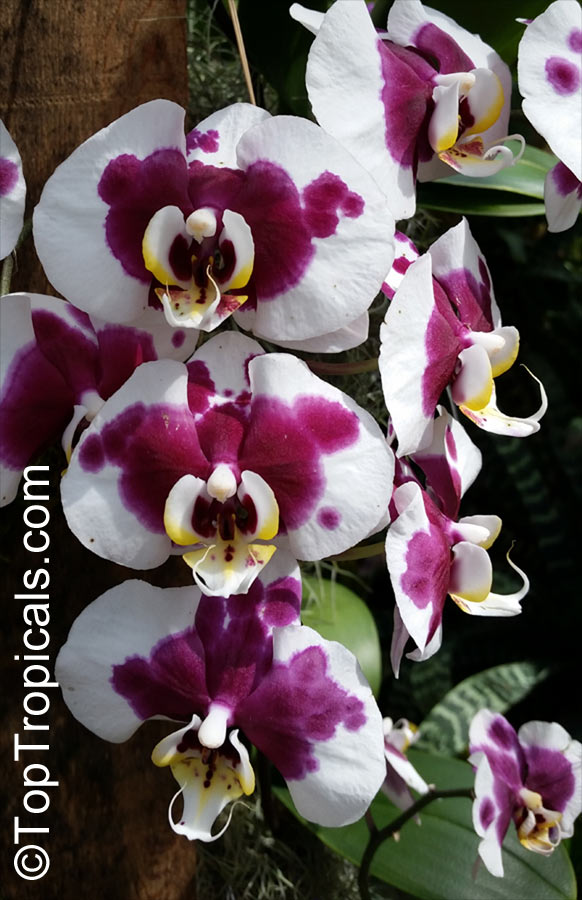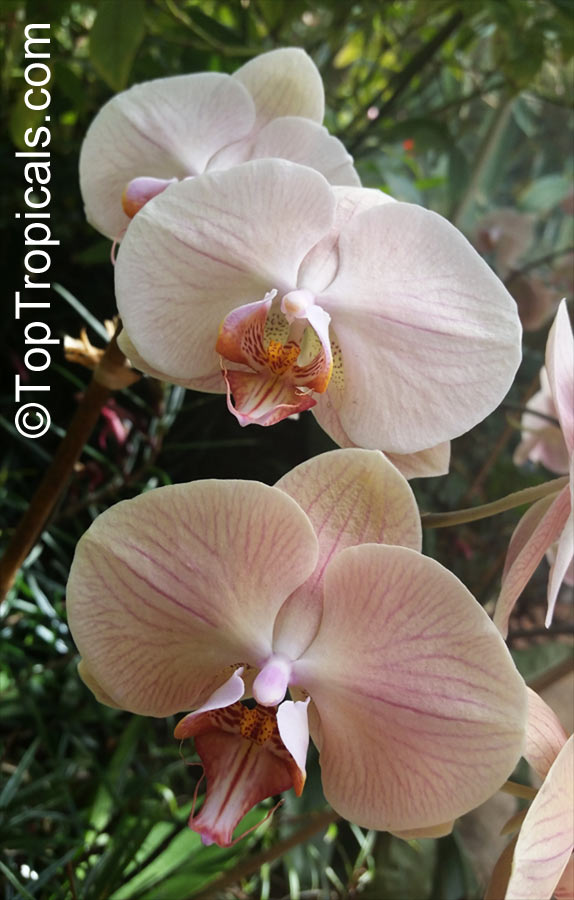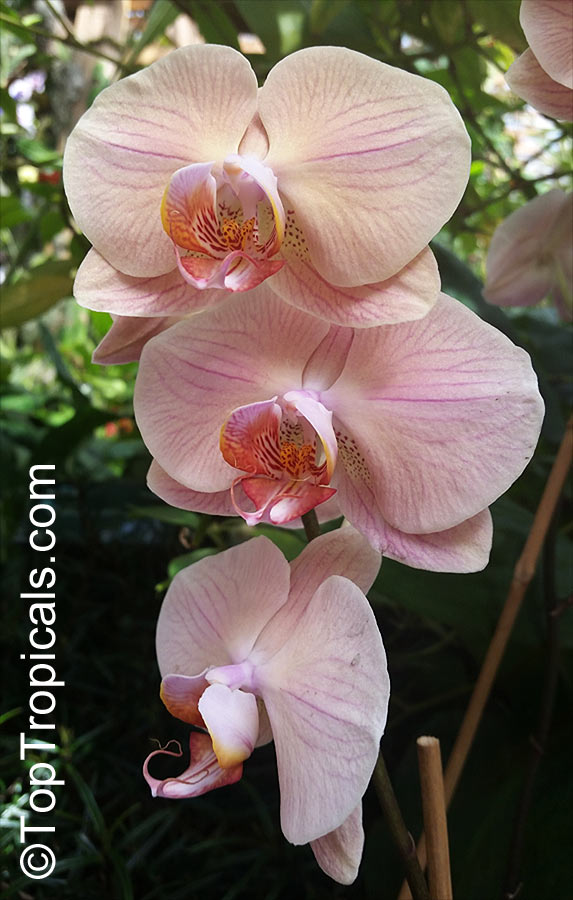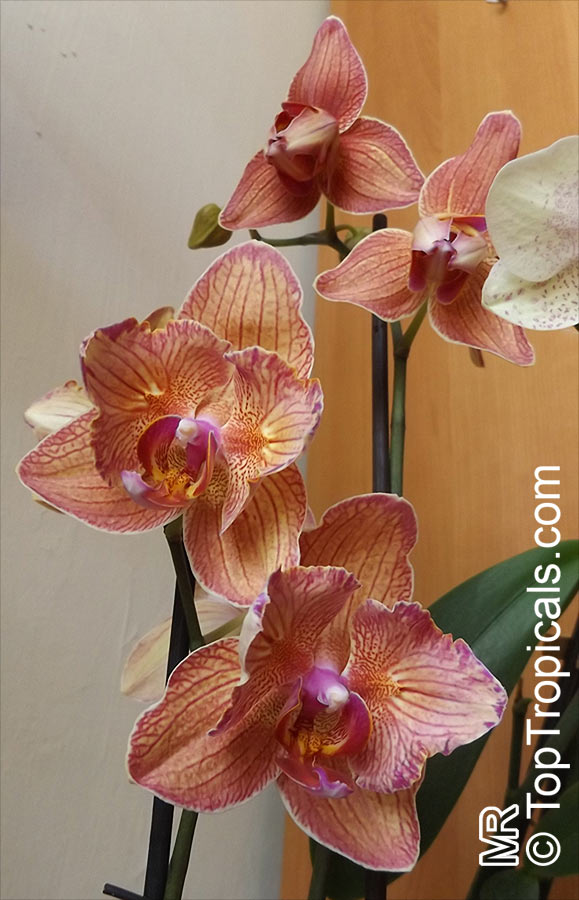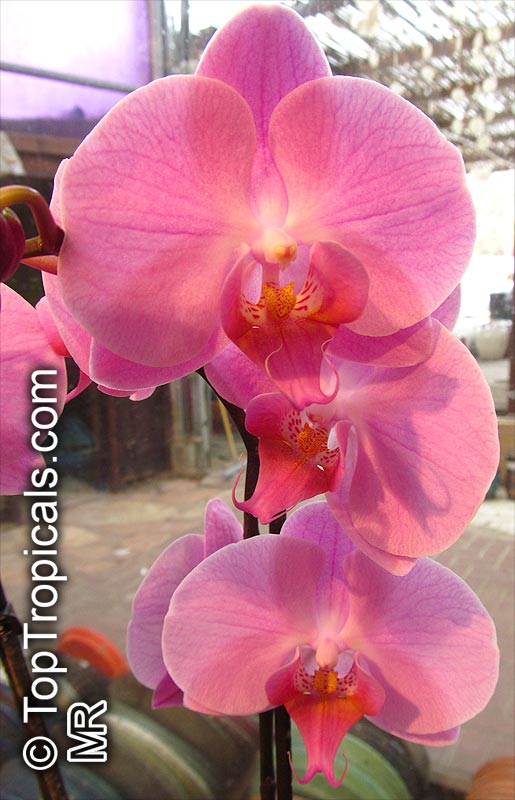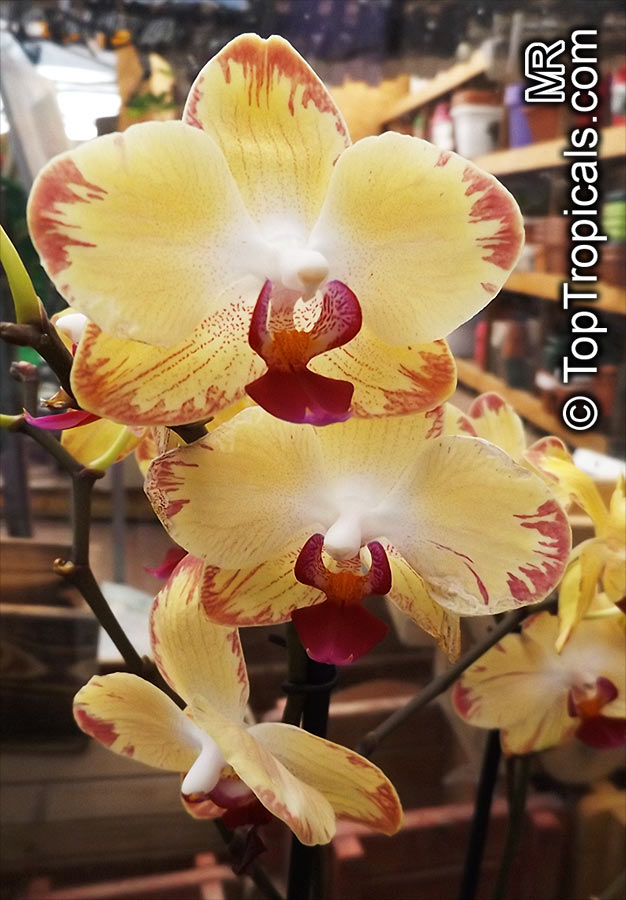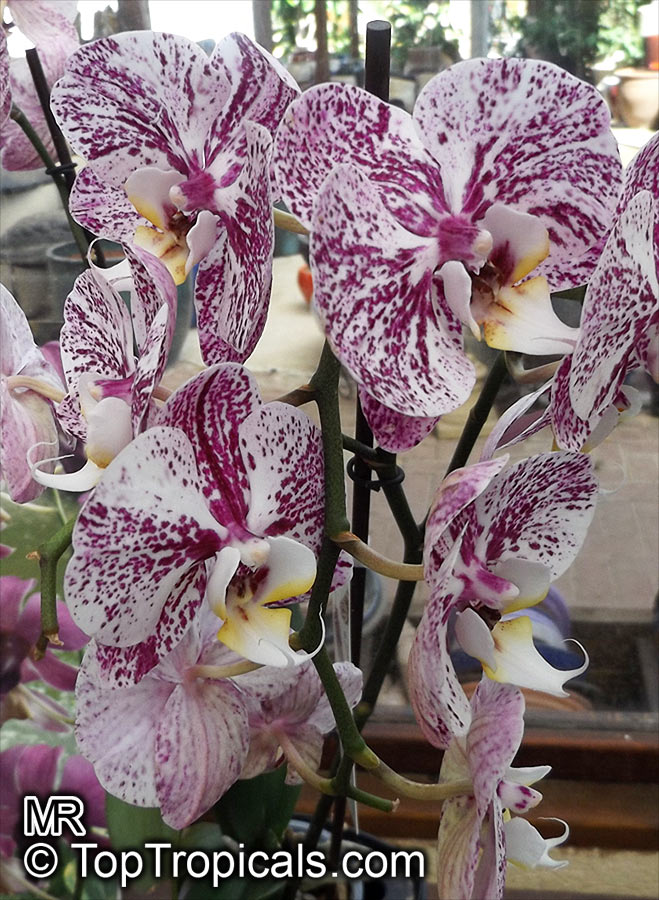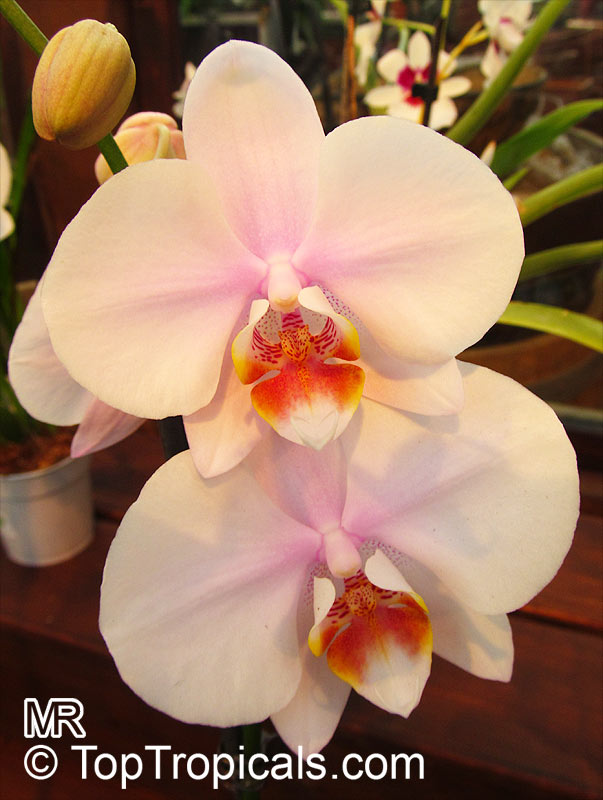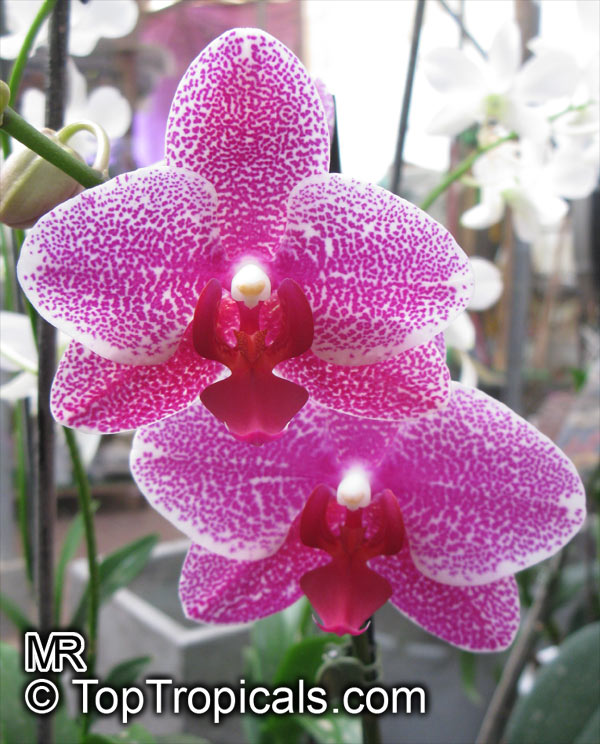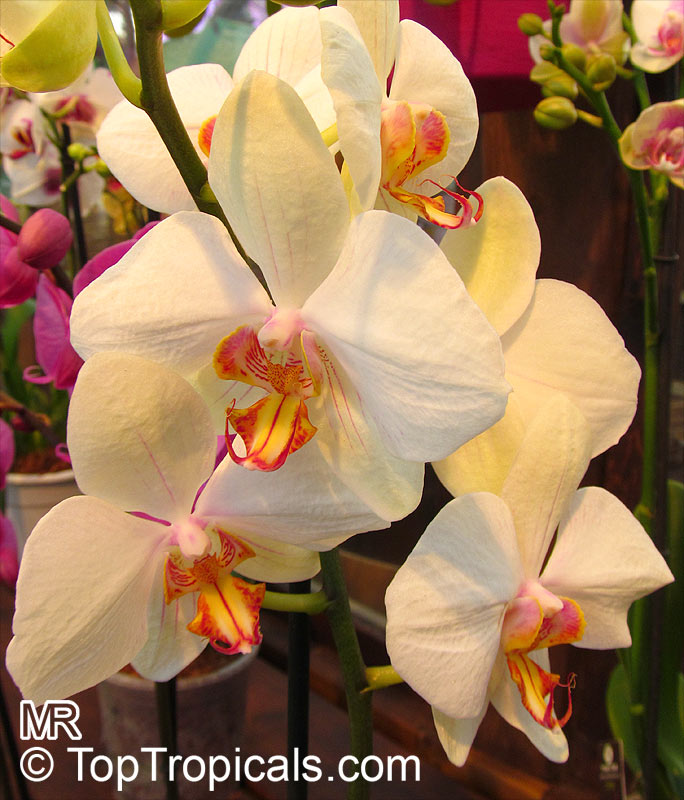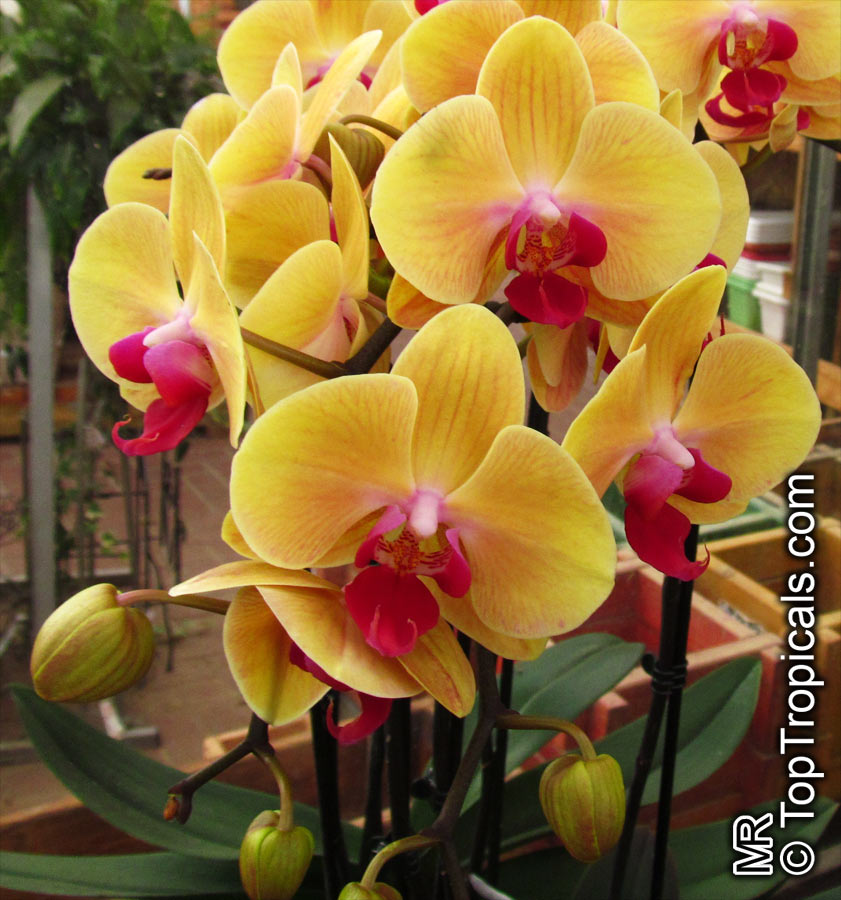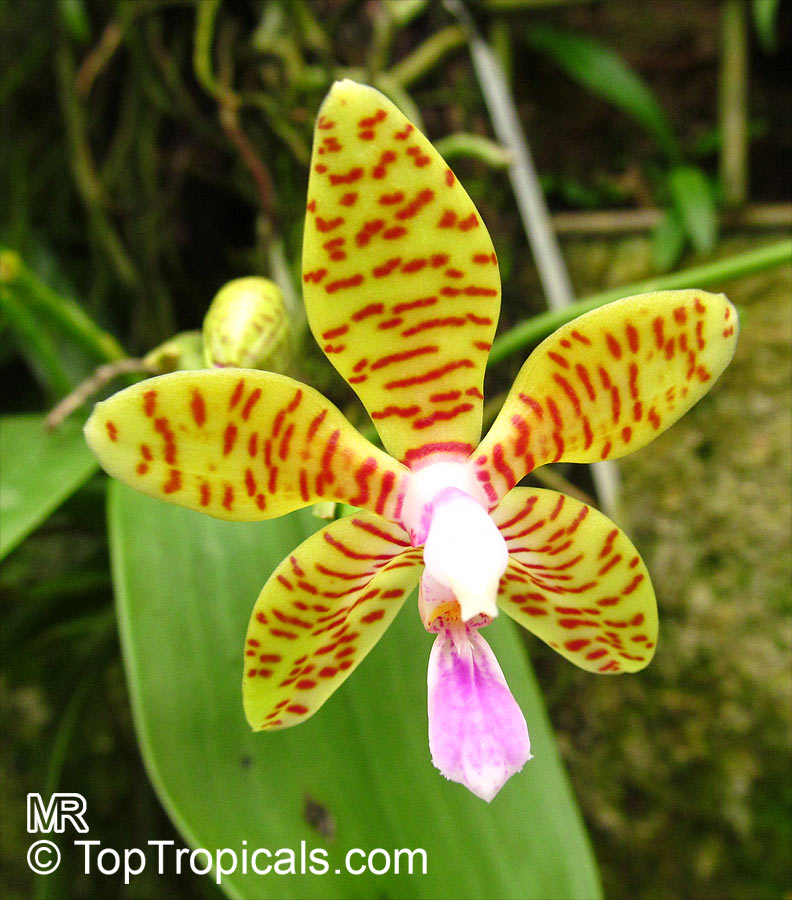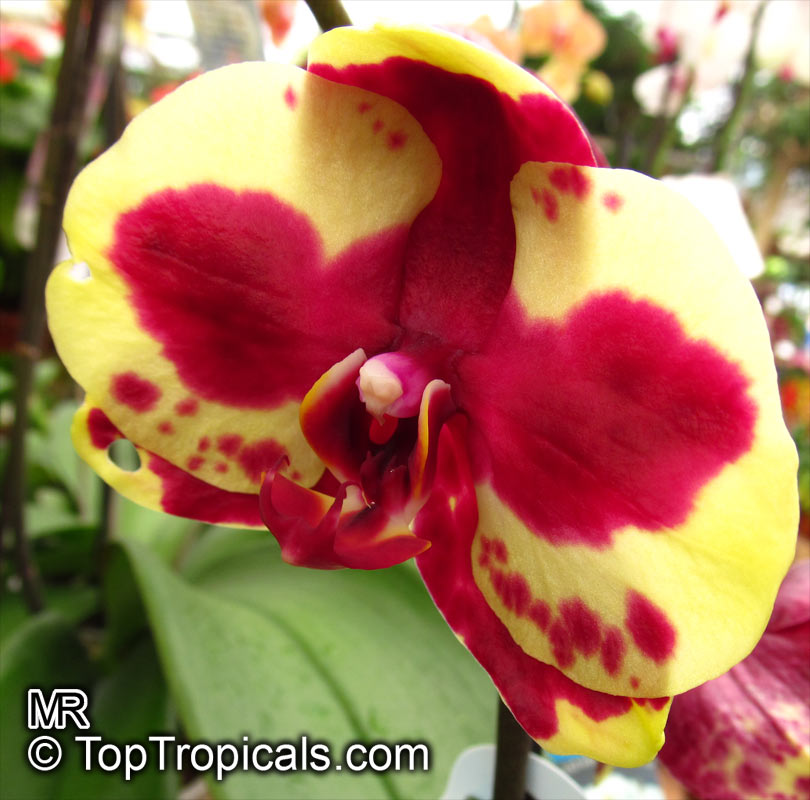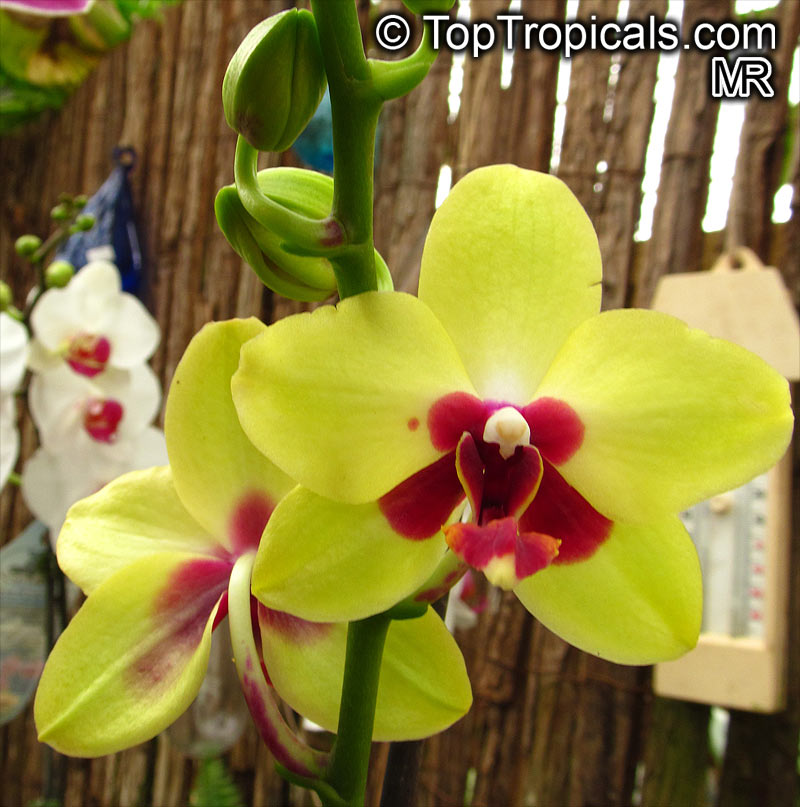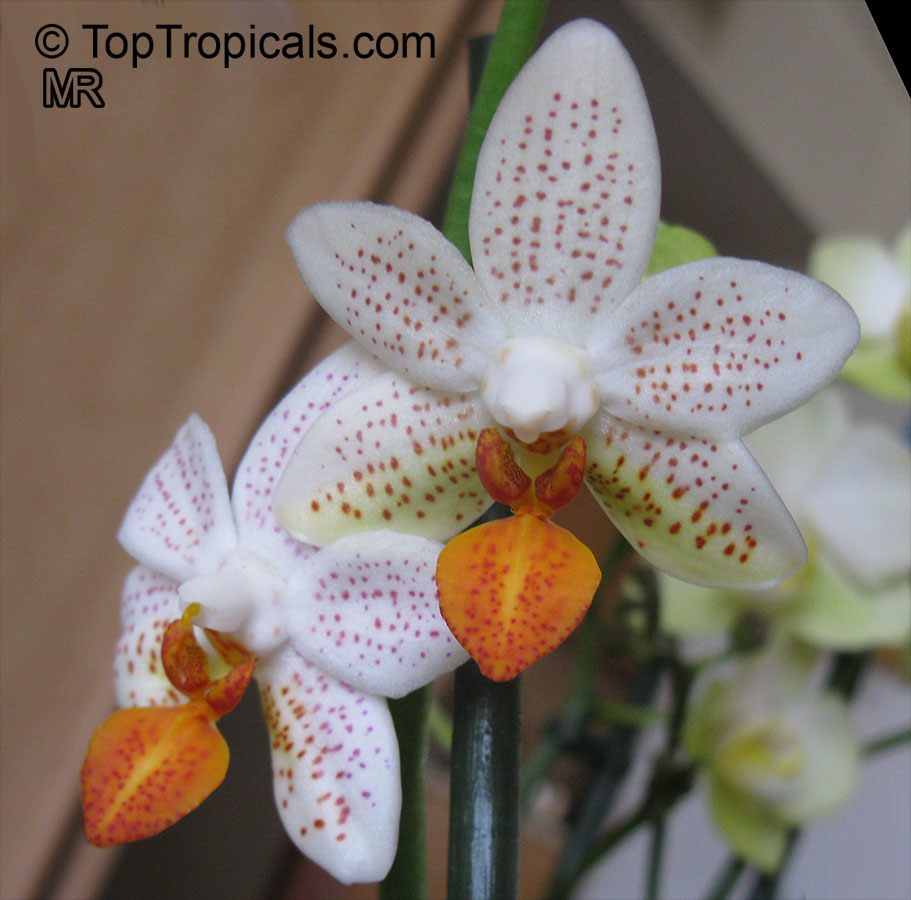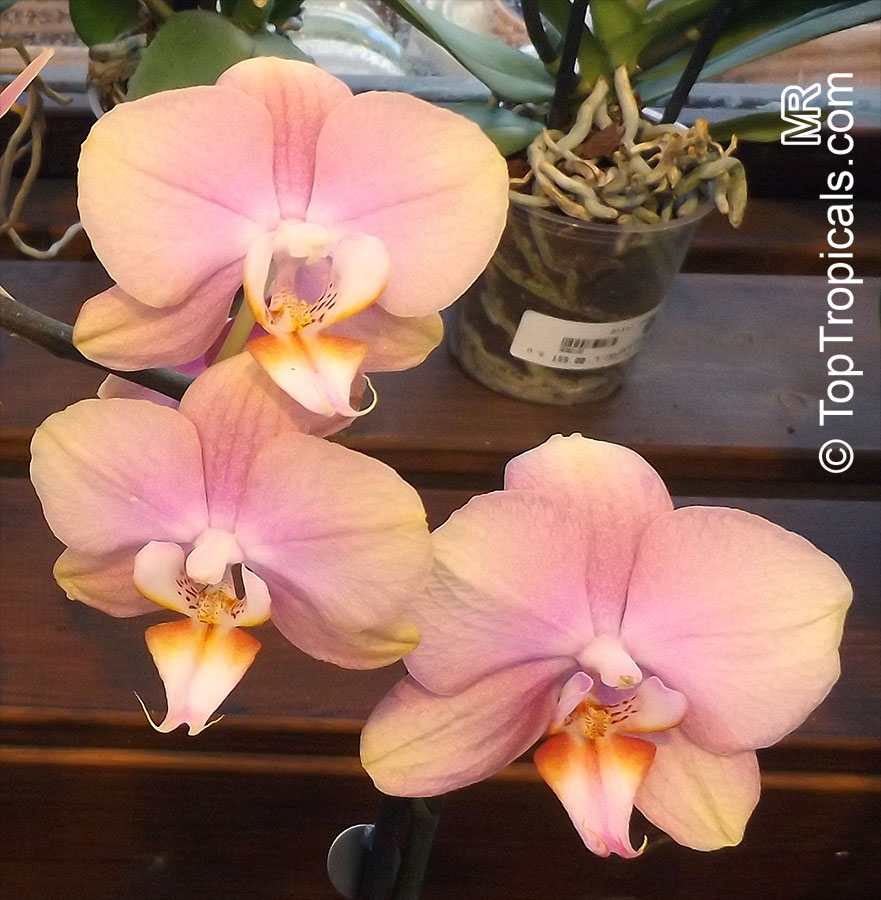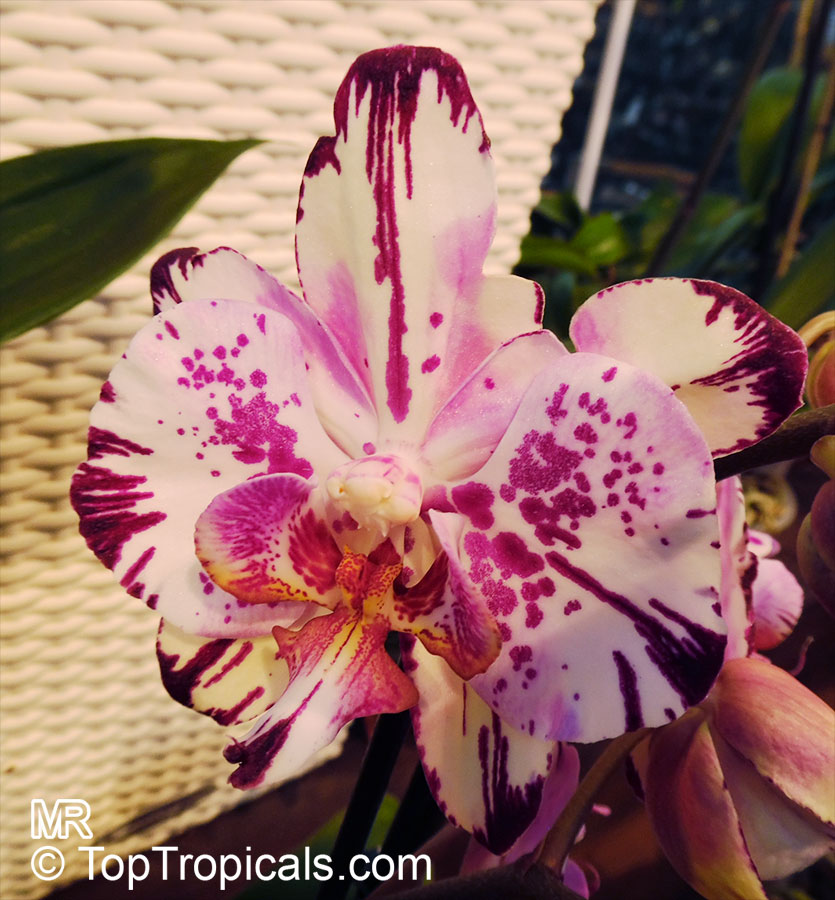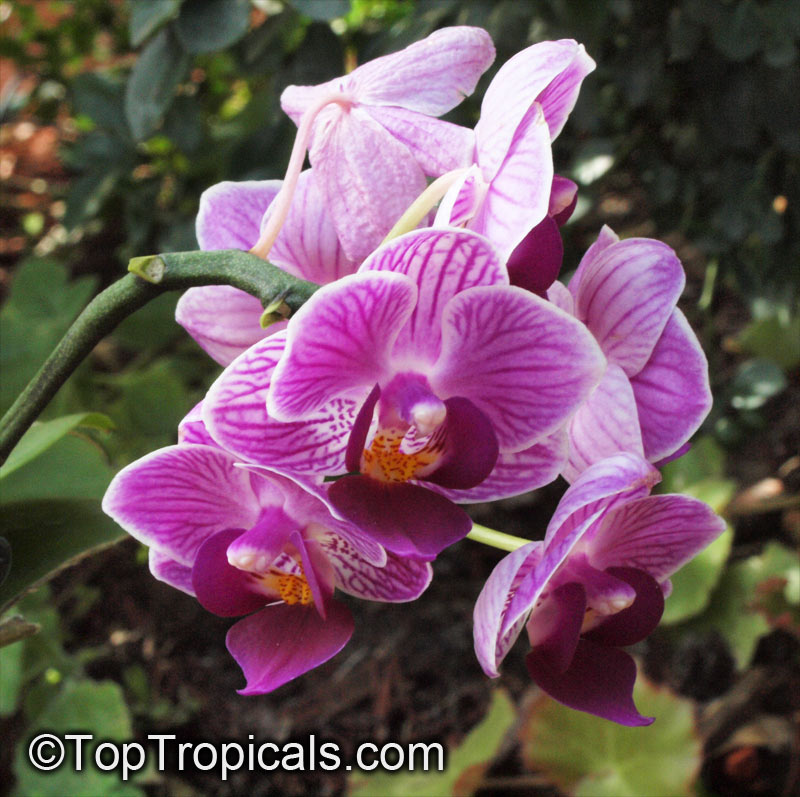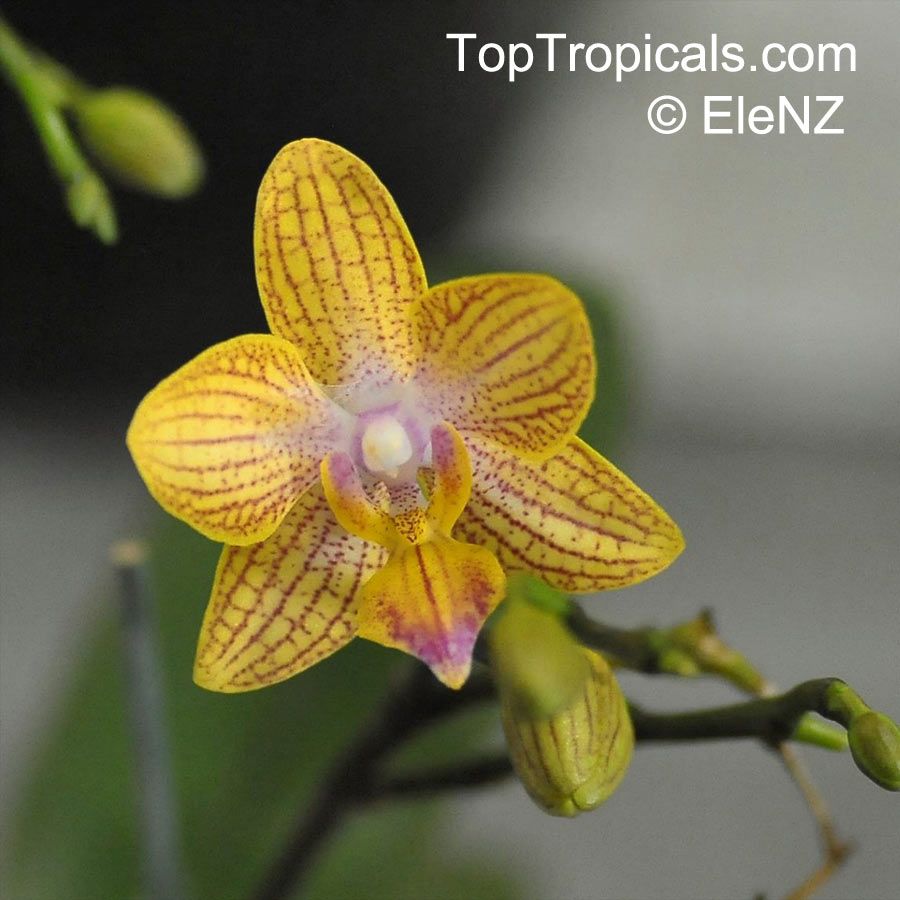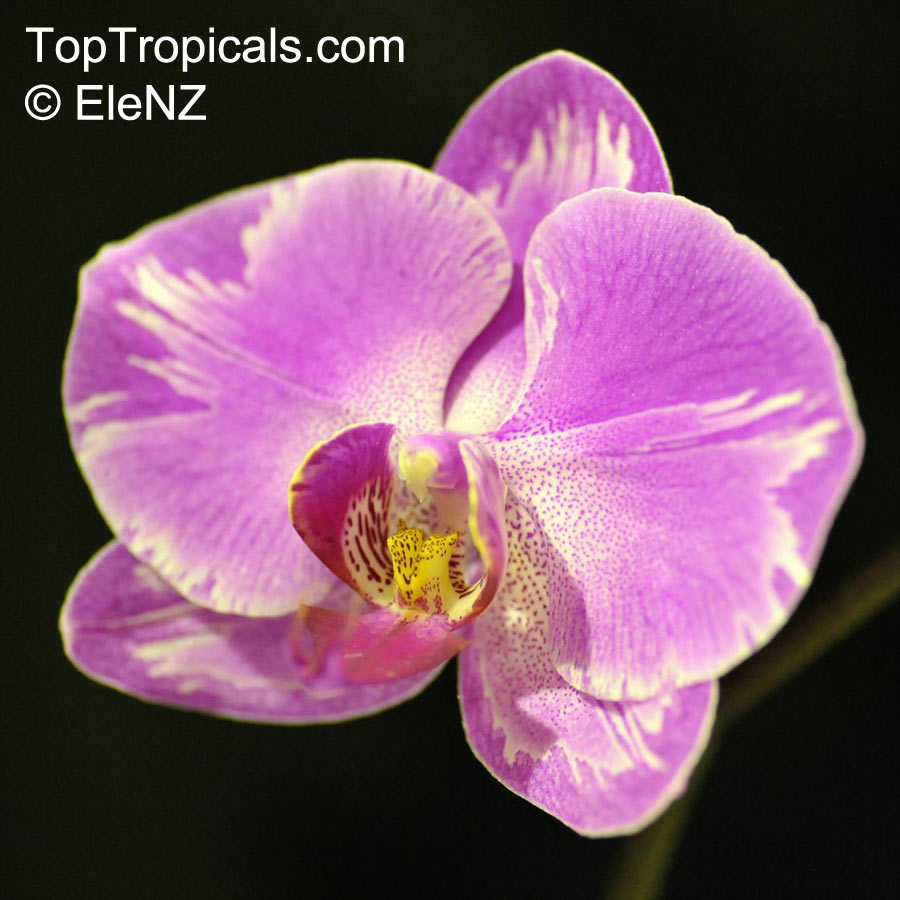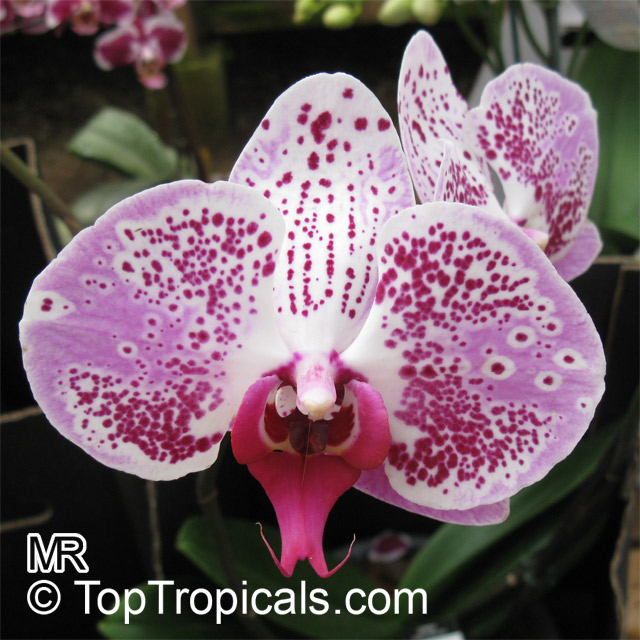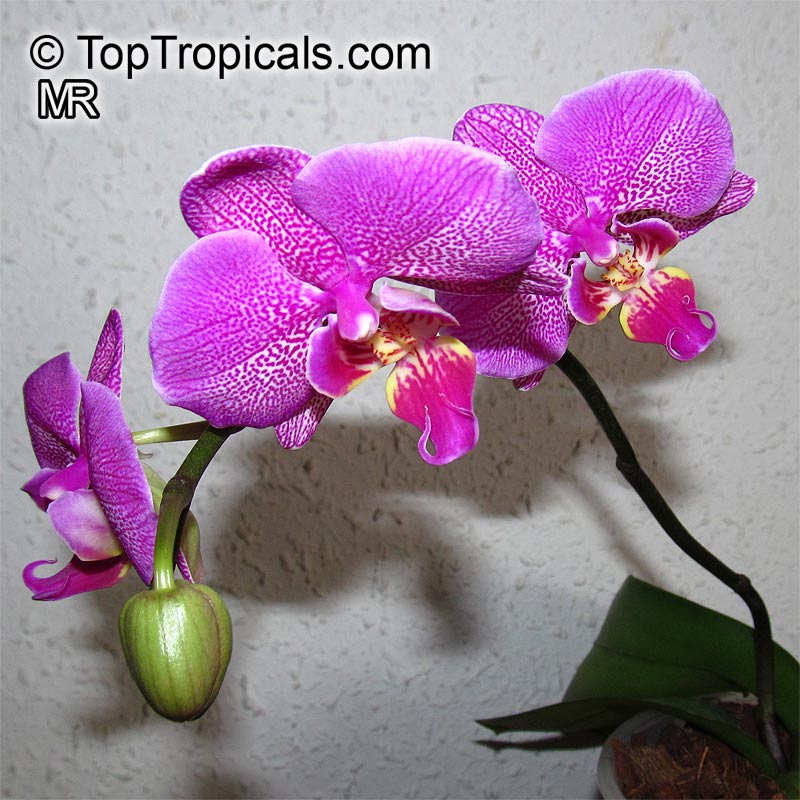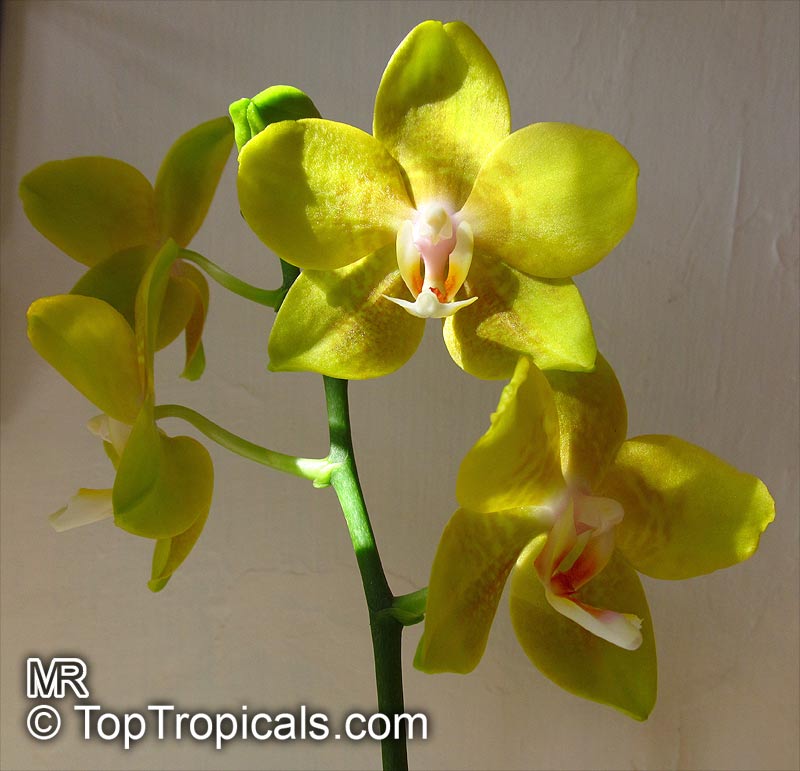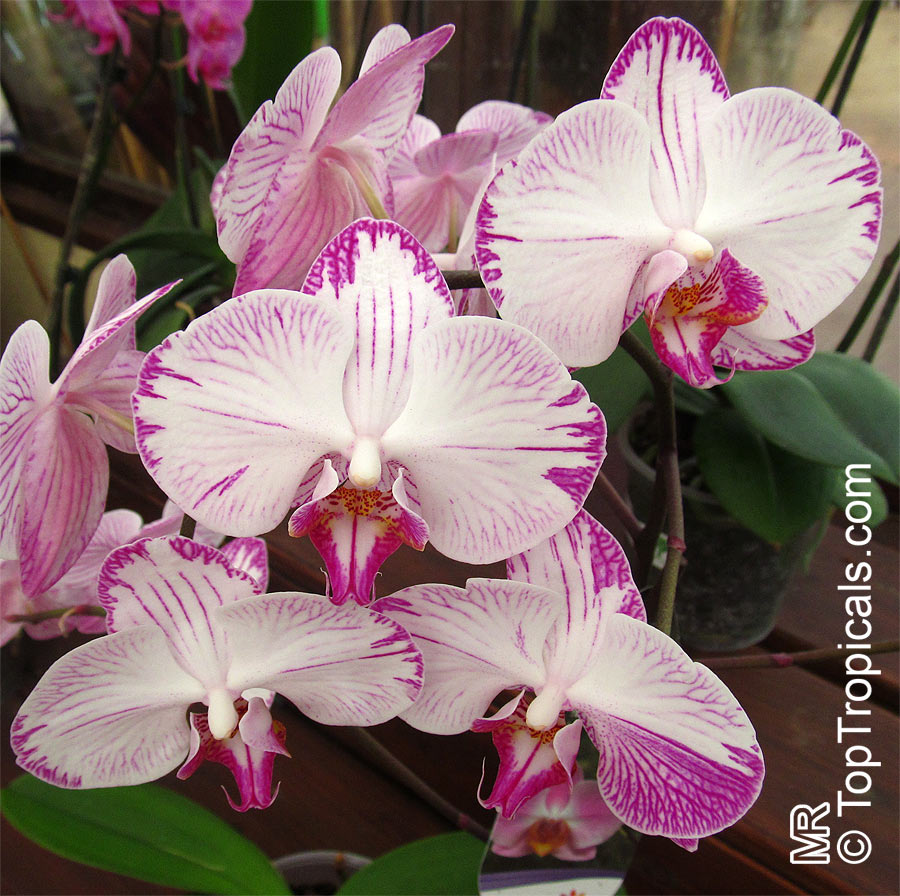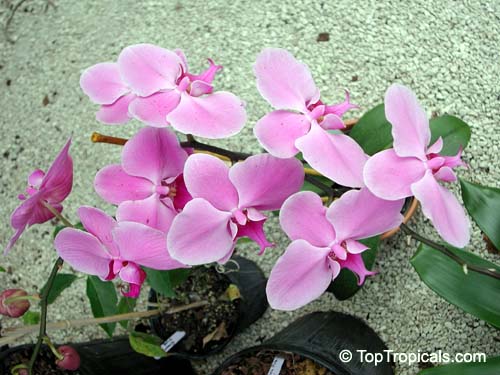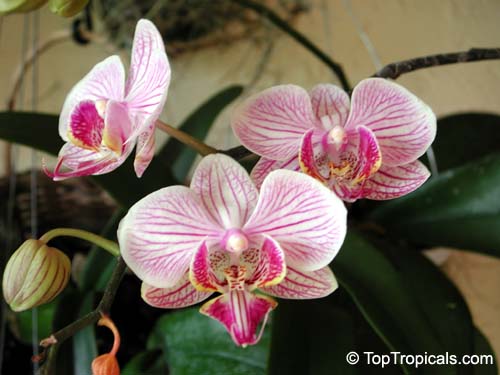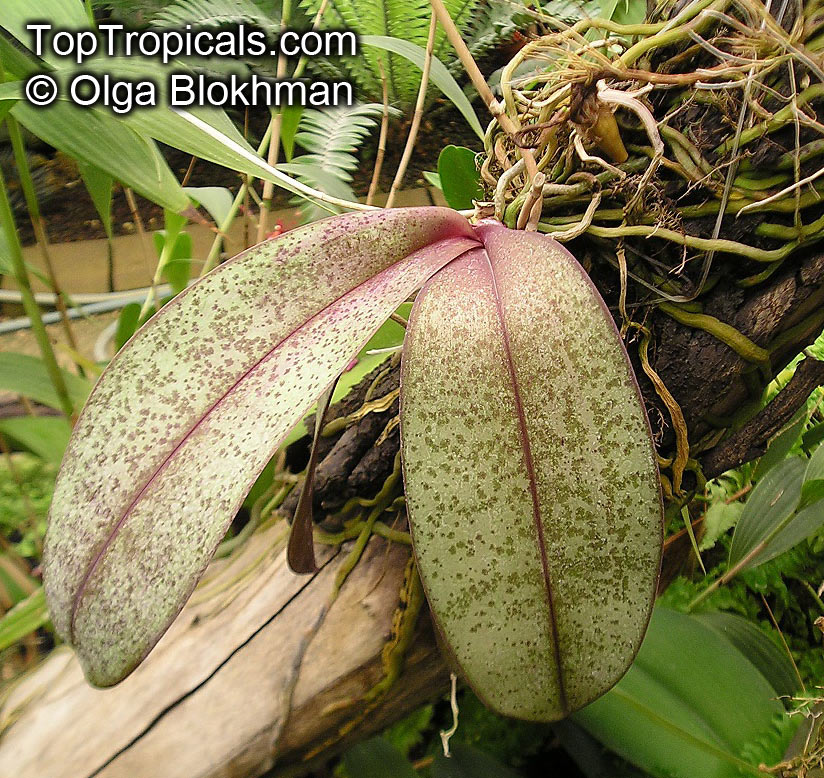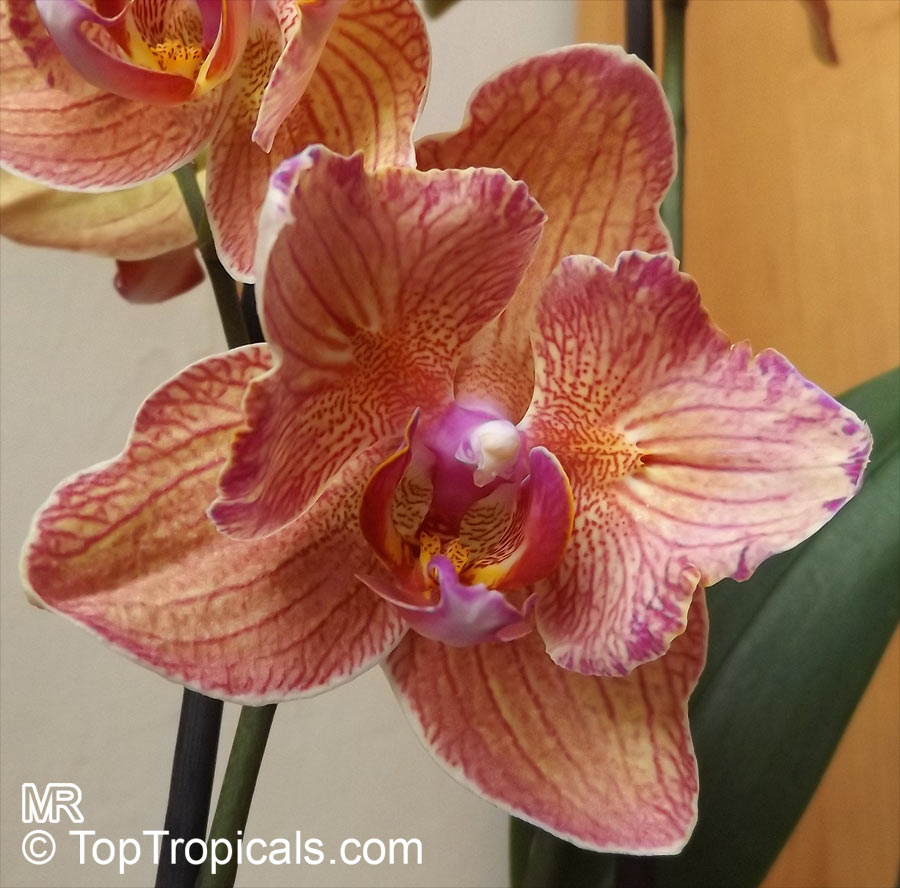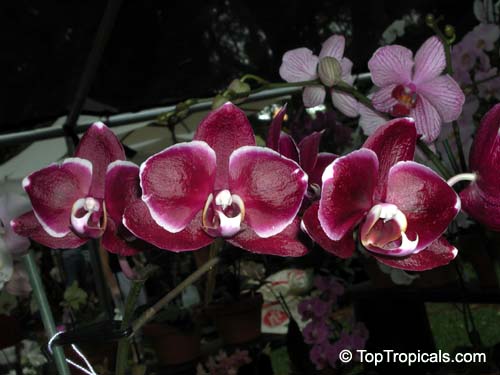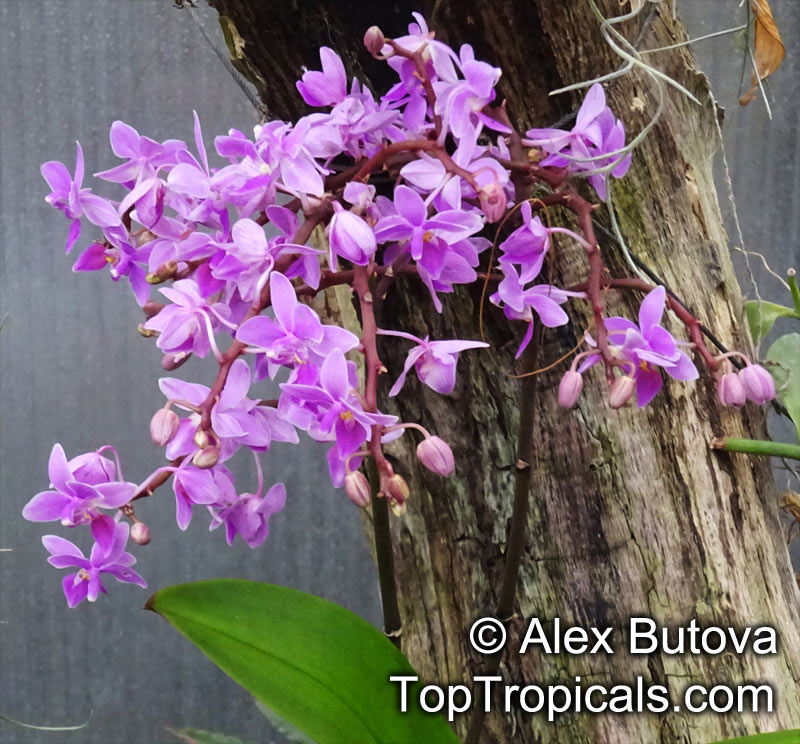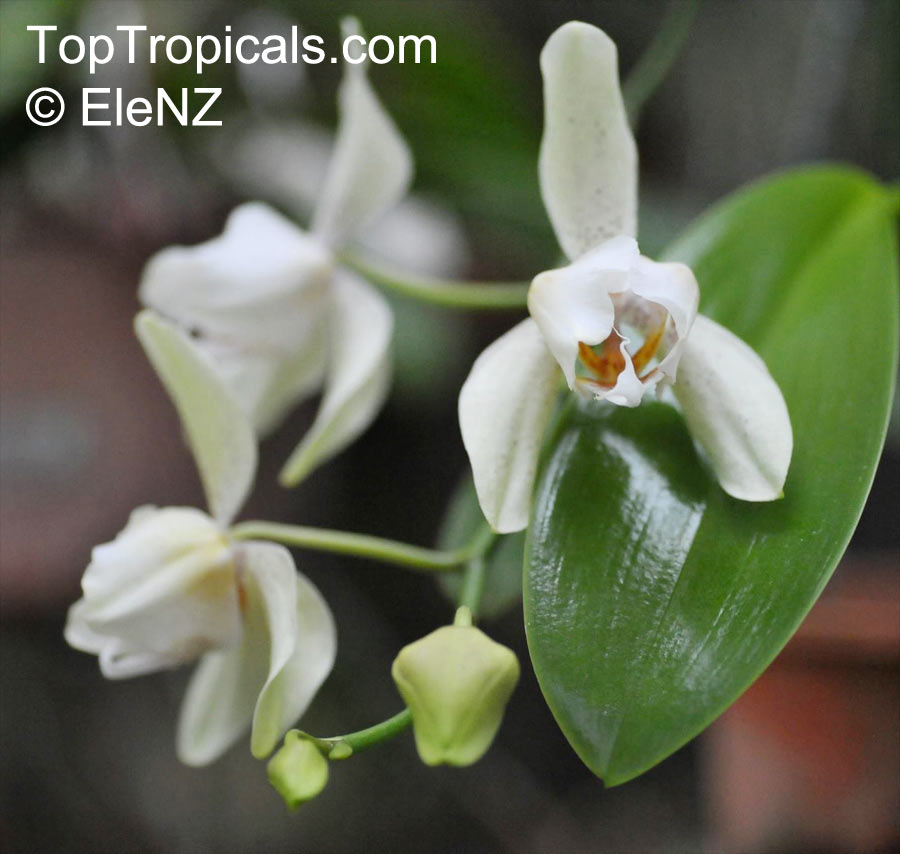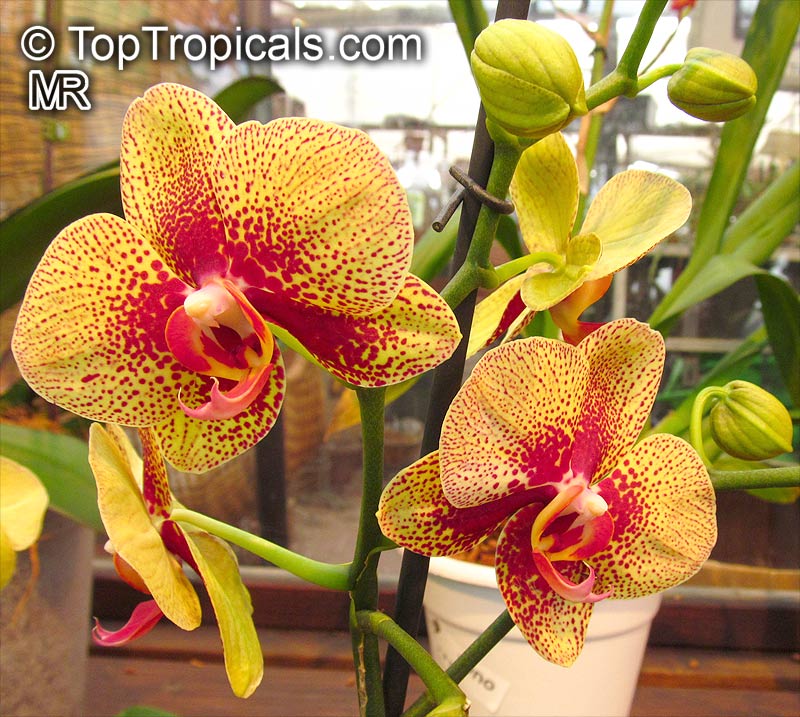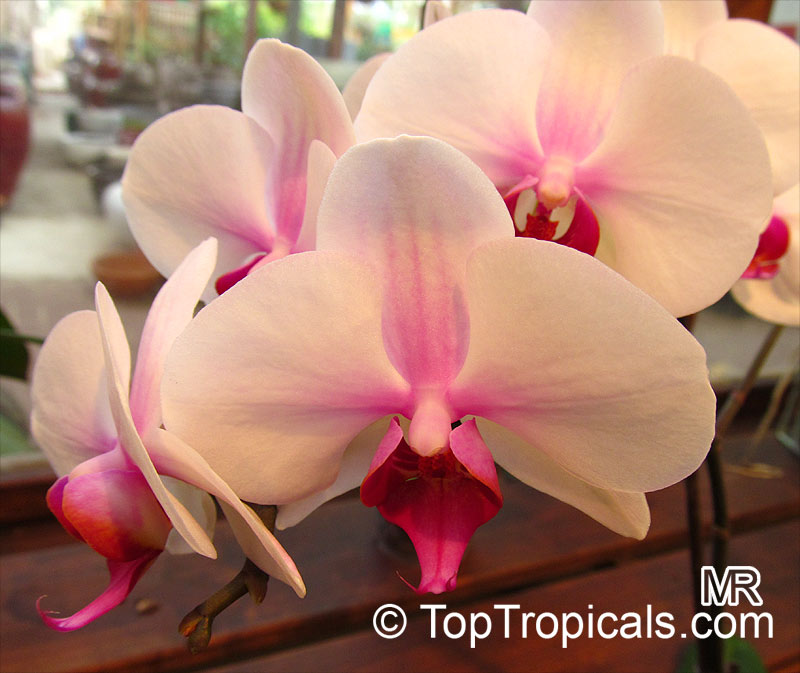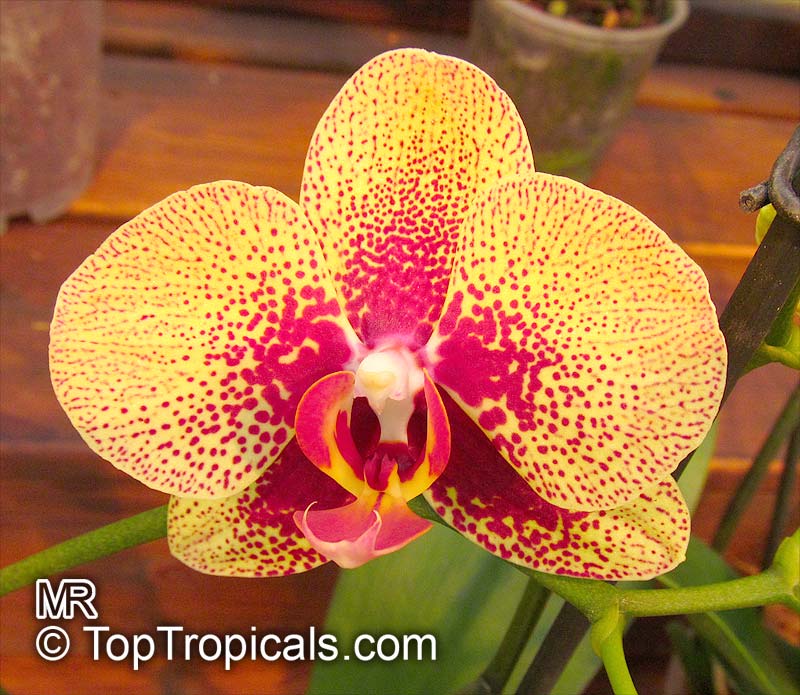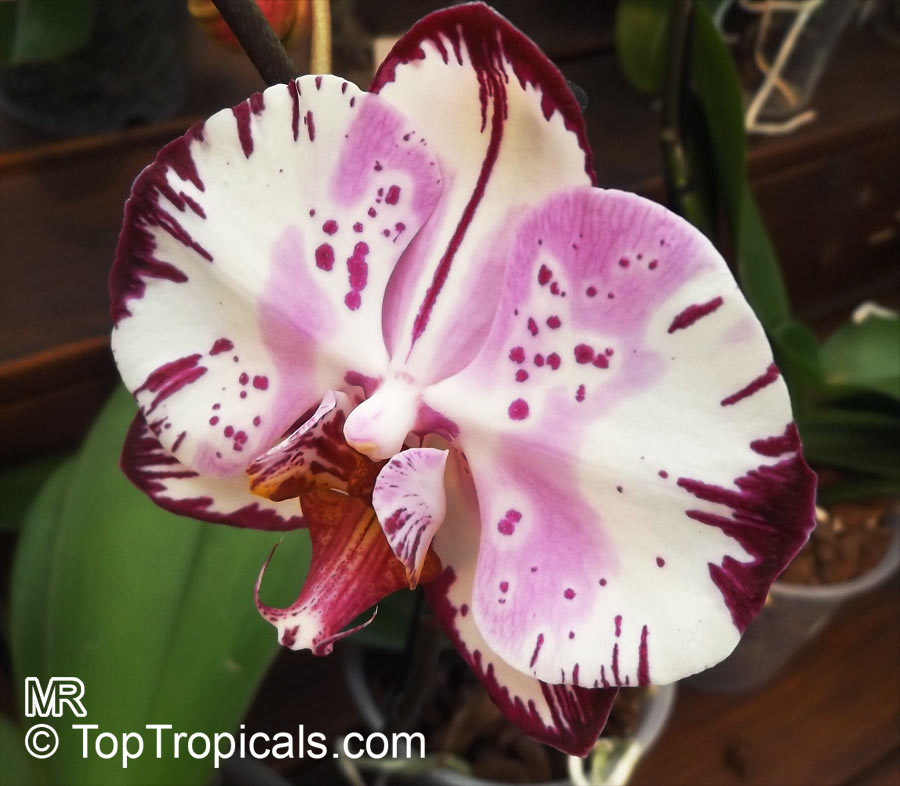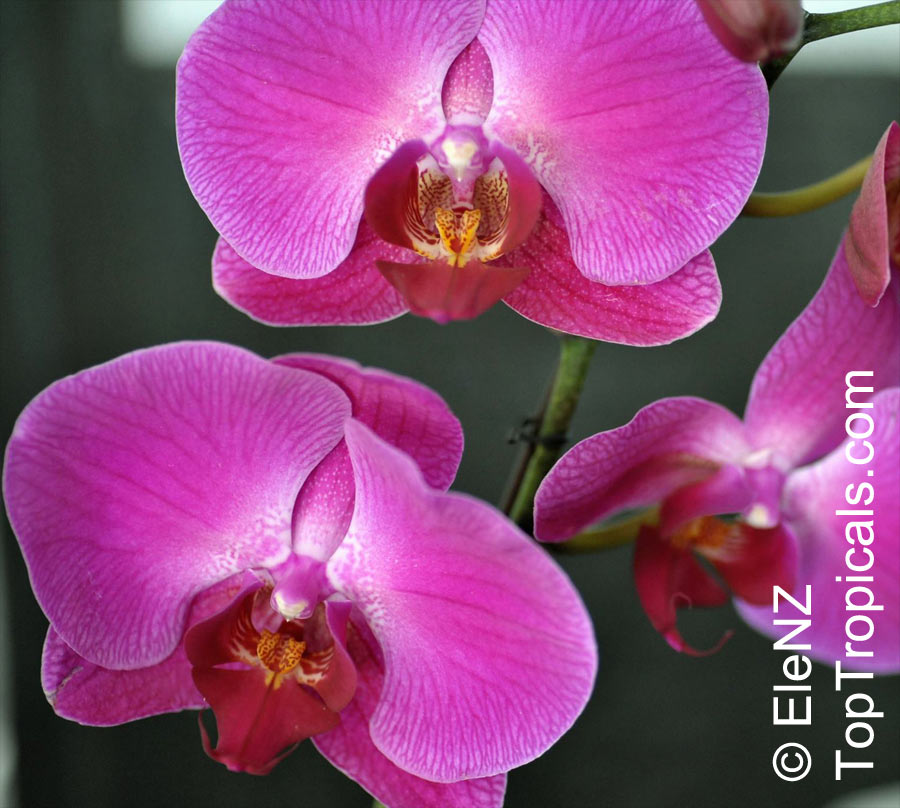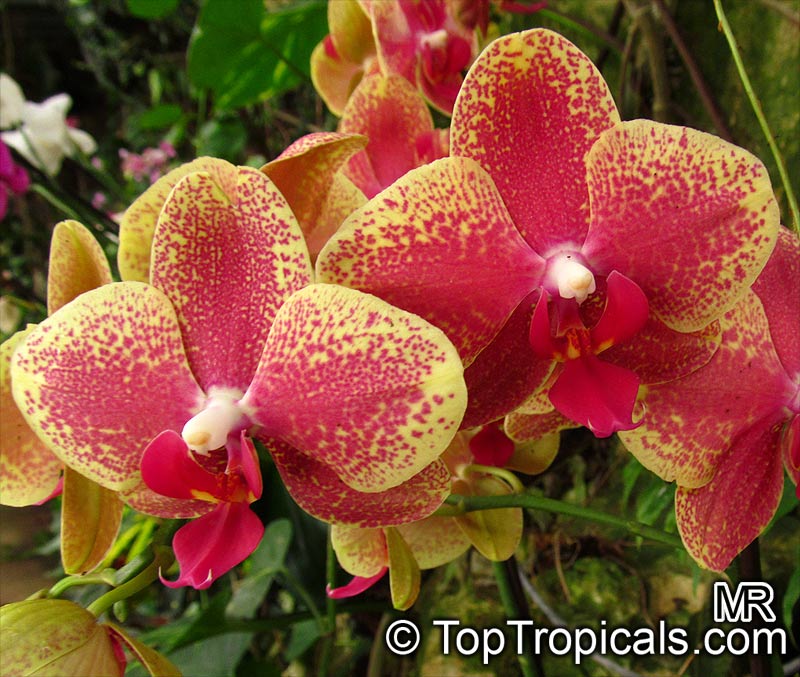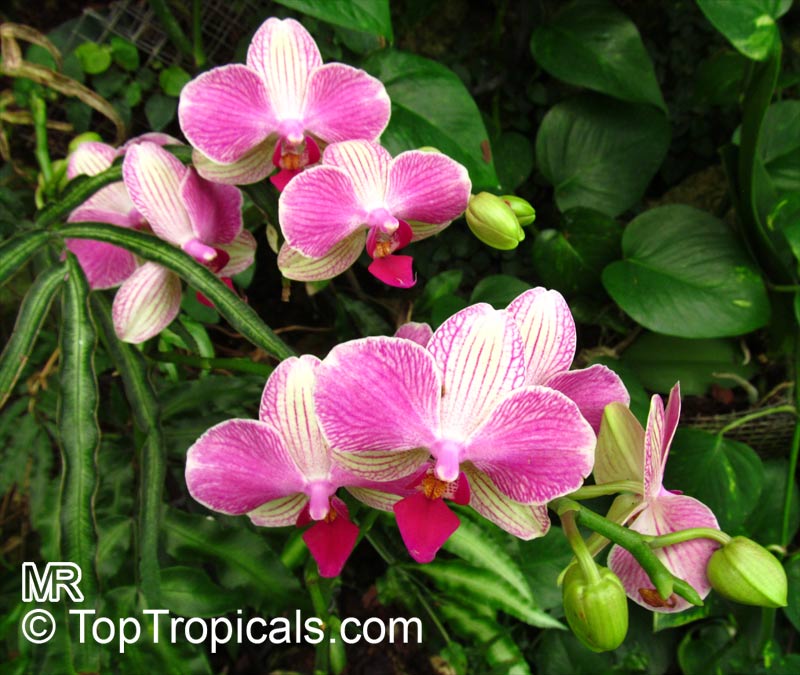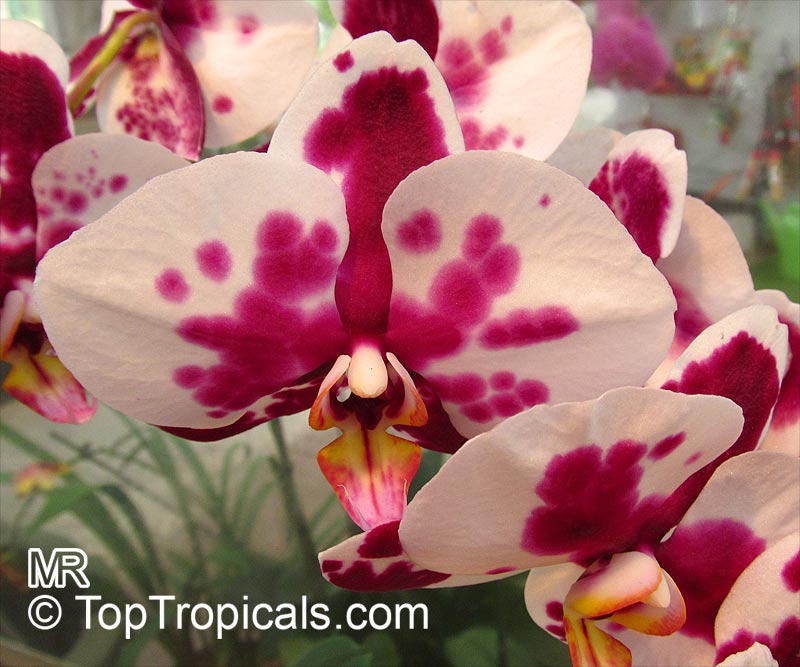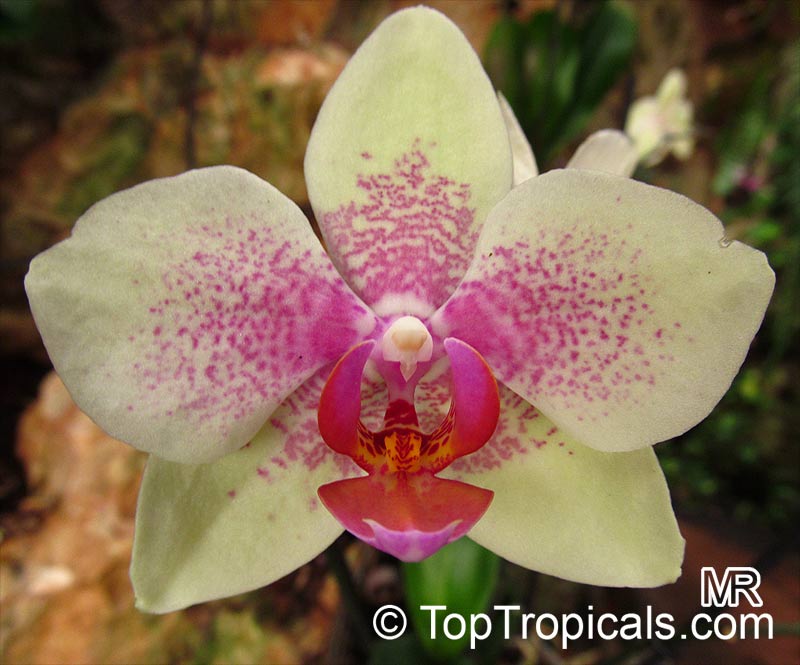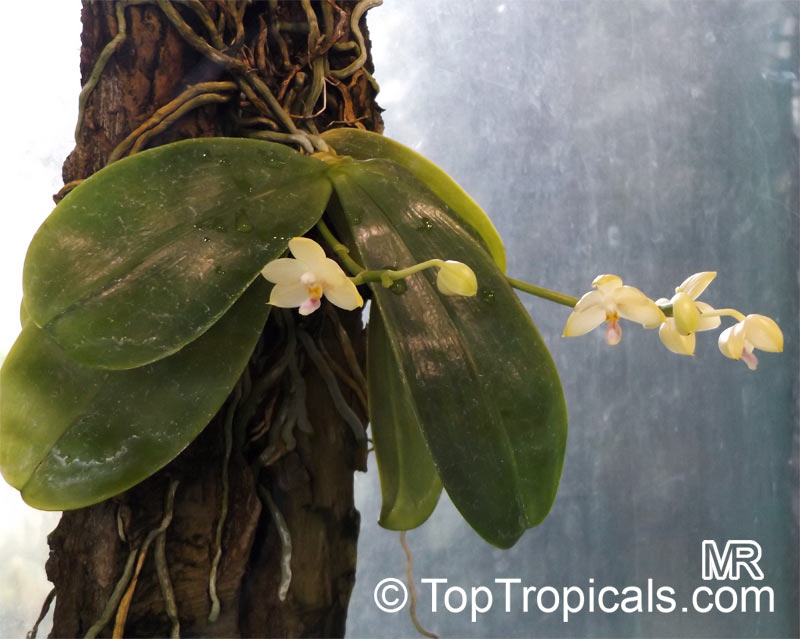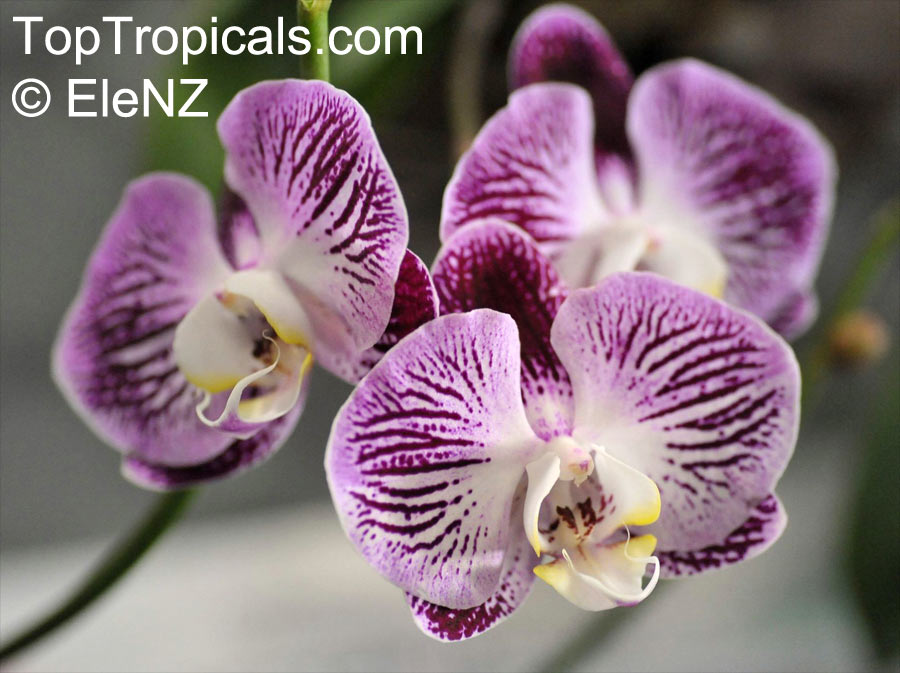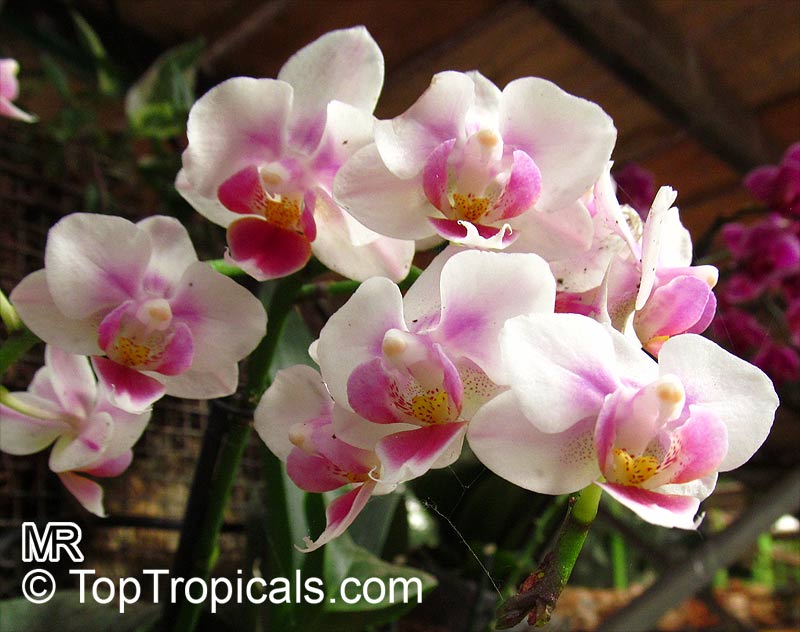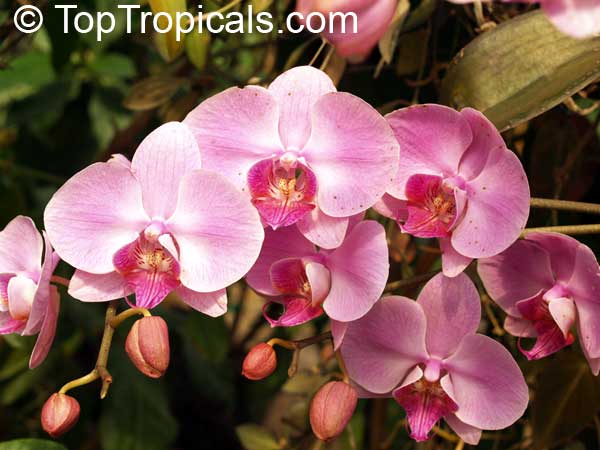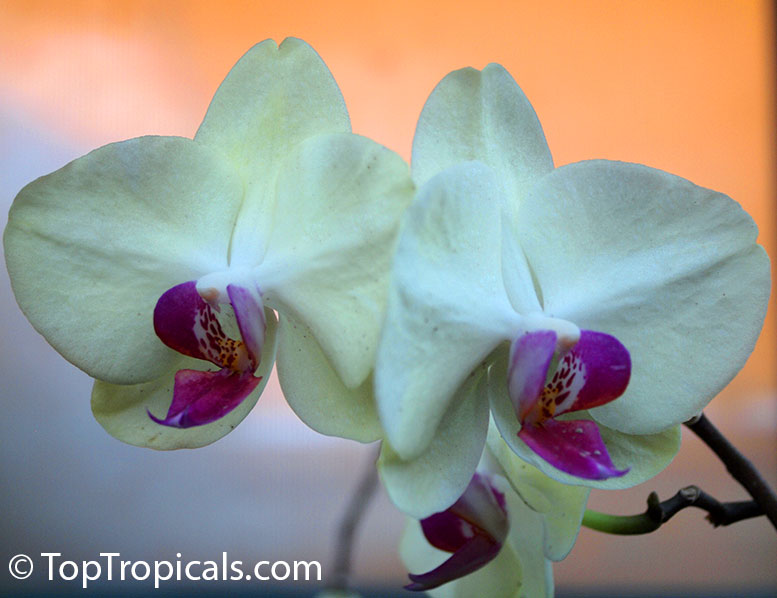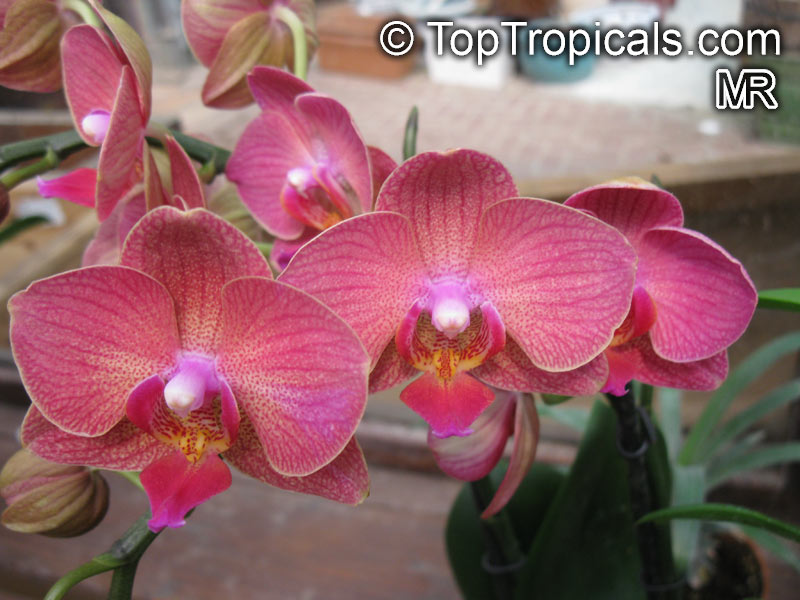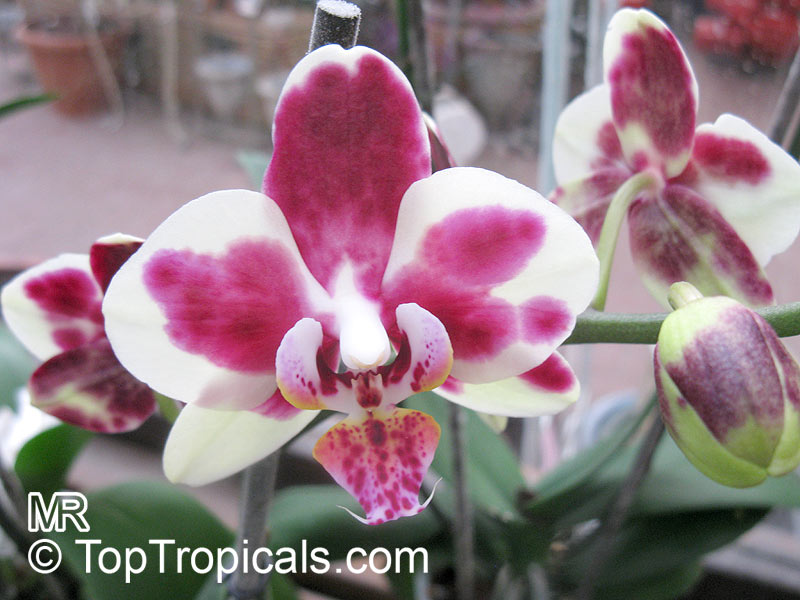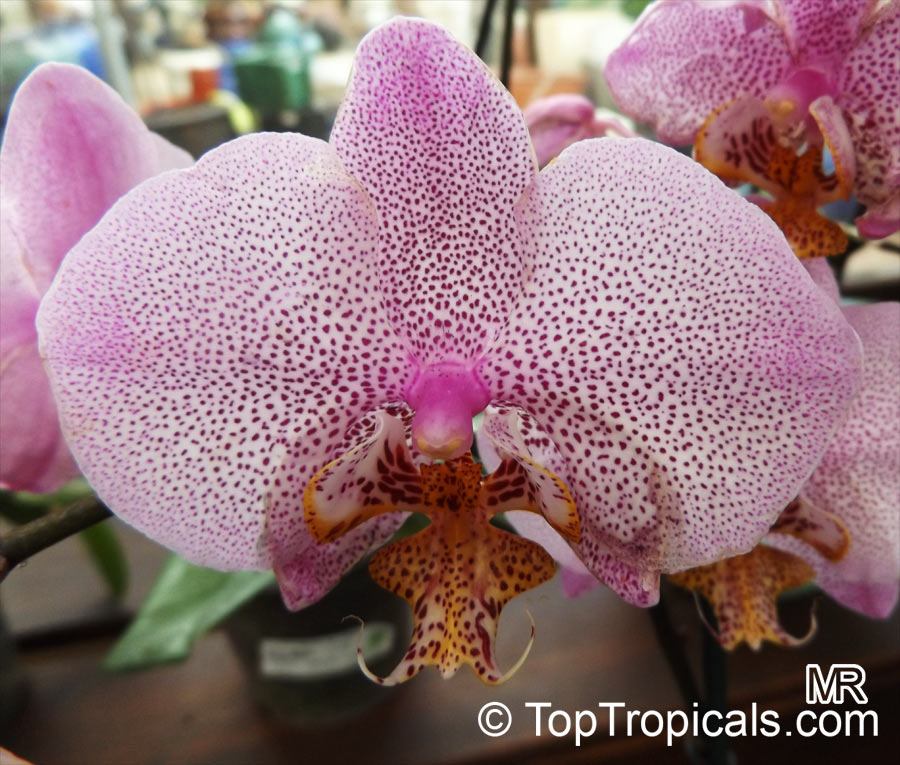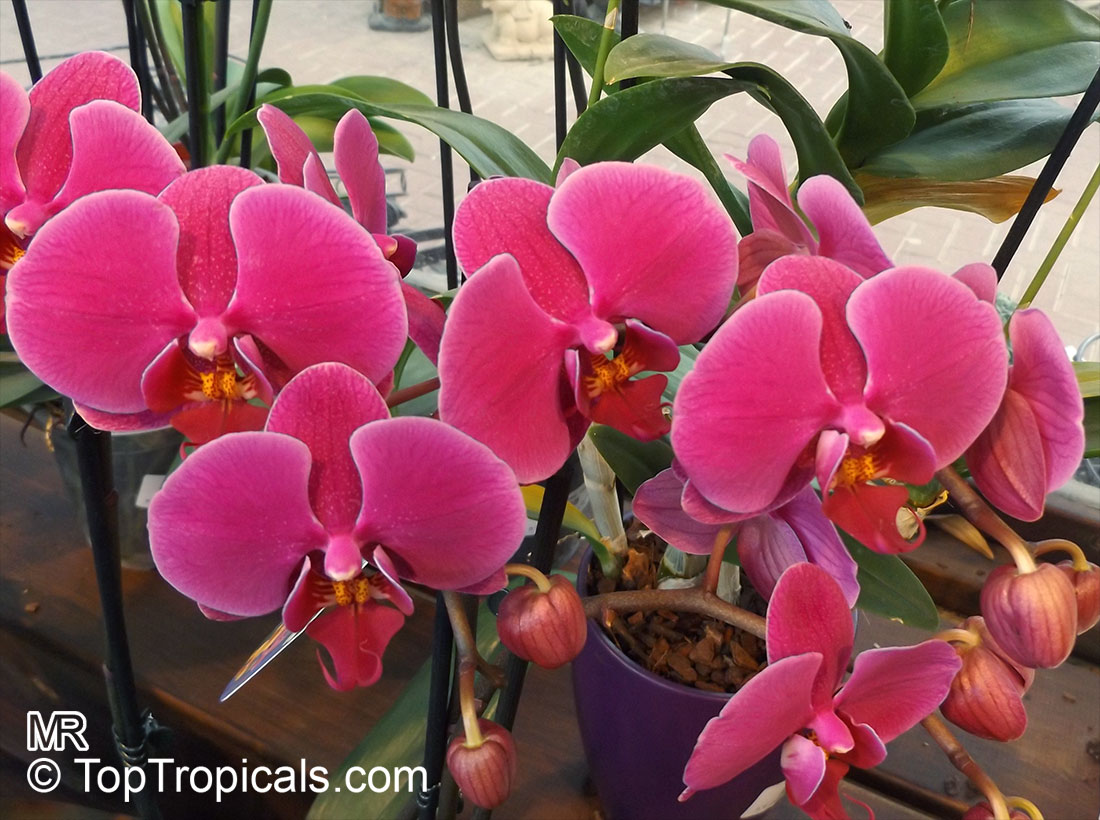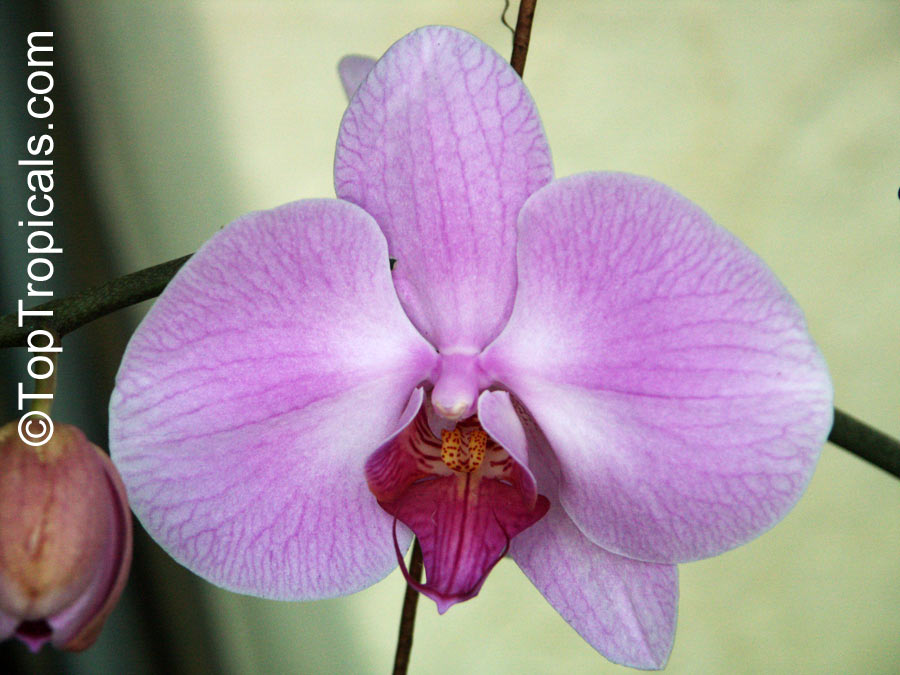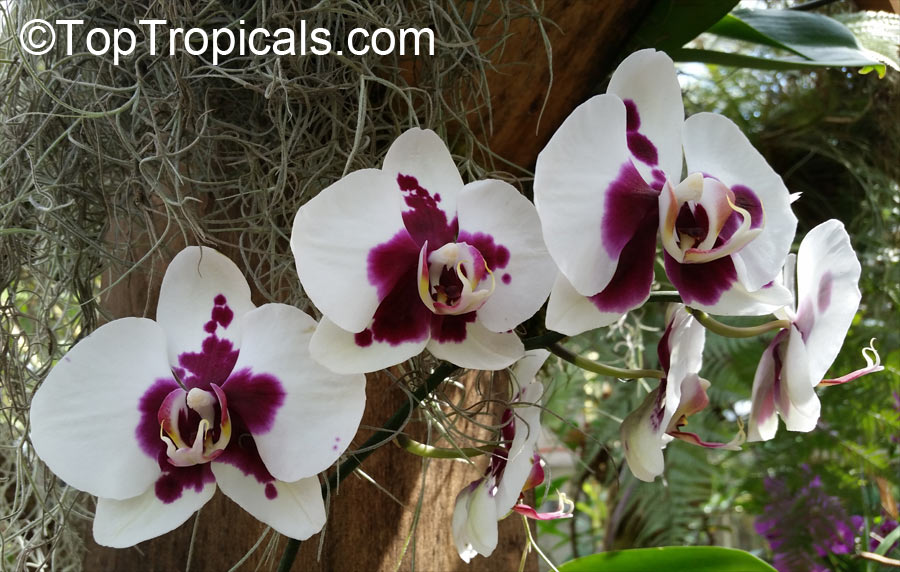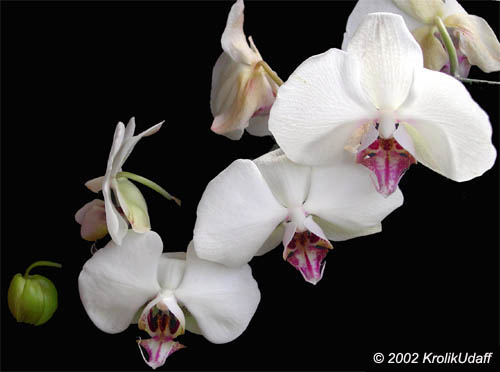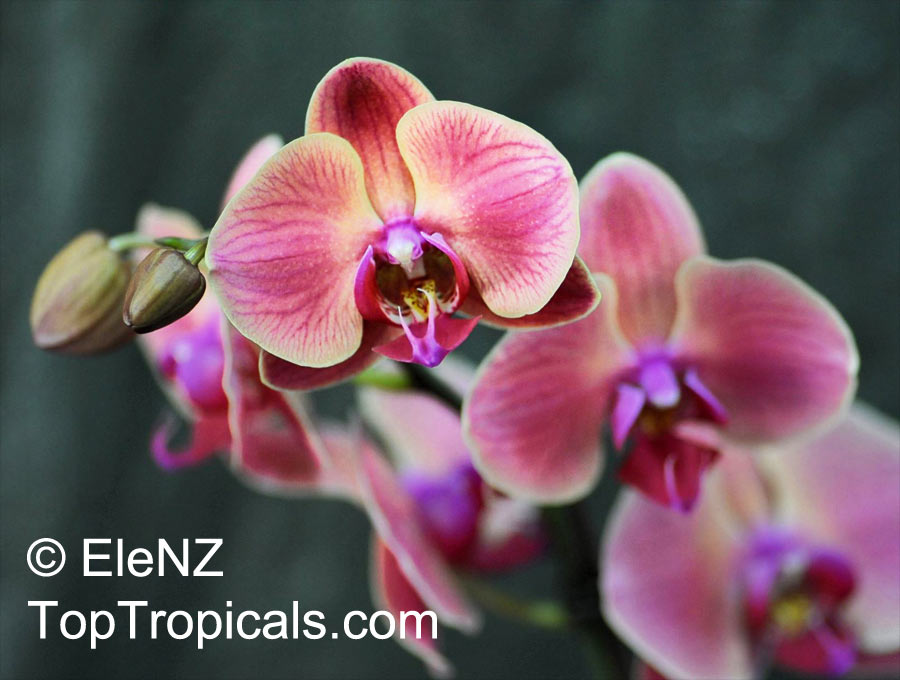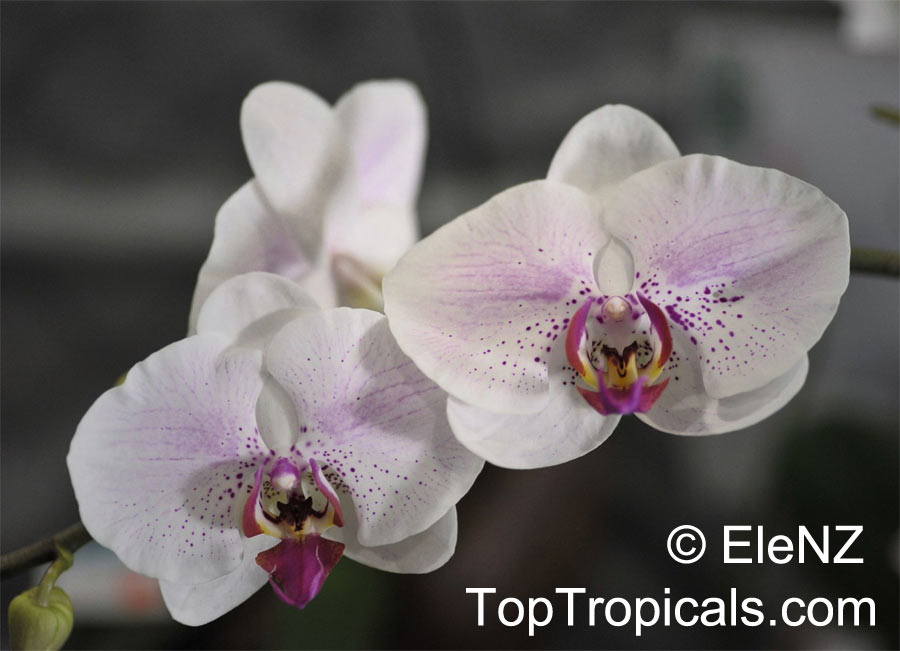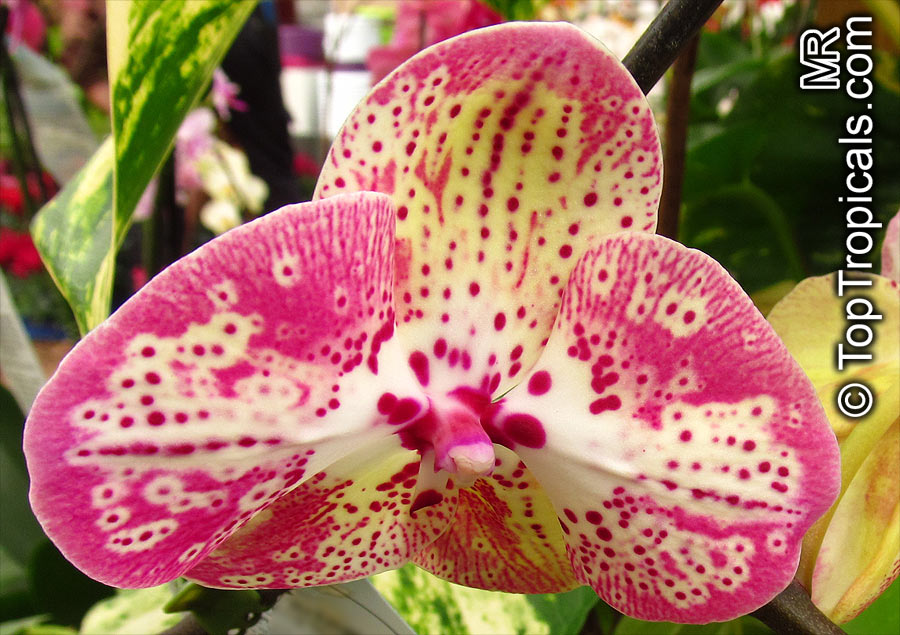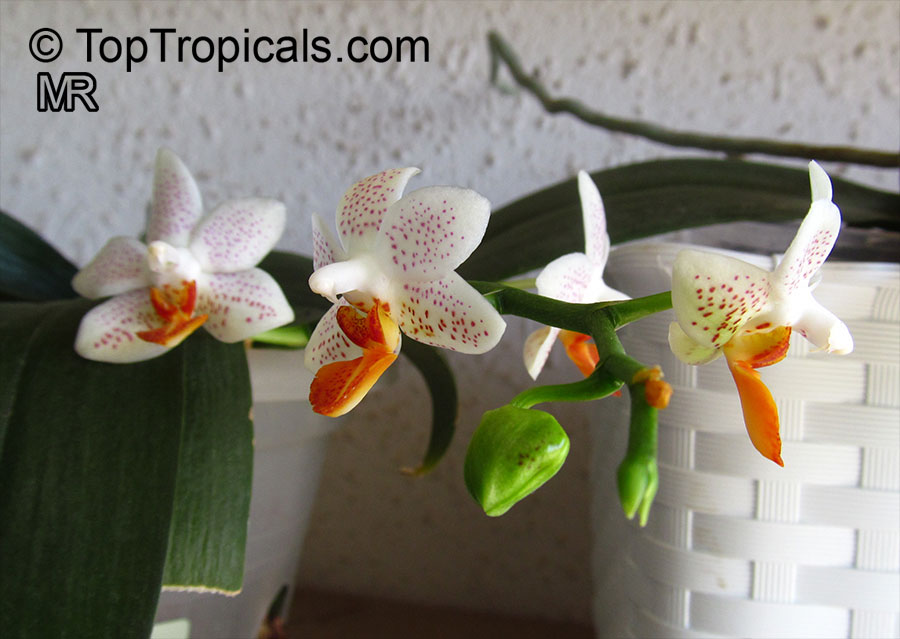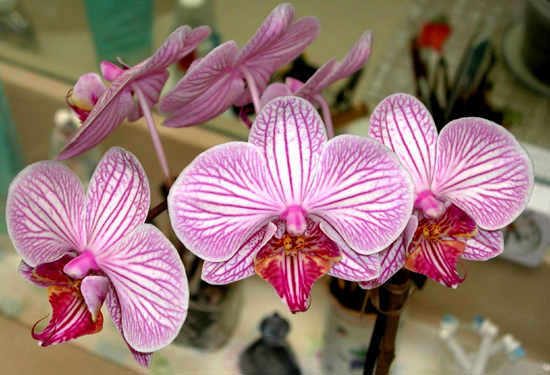Phalaenopsis sp. (Phalaenopsis Orchid)
Top Tropicals Plant Encyclopedia
Botanical name: Phalaenopsis sp.
Common names: Phalaenopsis Orchid, Moth Orchid
Family: Orchidaceae
Origin: from Java and the South Seas, the Phillipines and Queensland Australia










These are definately warm growers who like to be shaded, the perfect houseplant, and very free flowering. These orchids are the easiest and most rewarding of the family for the home grower as they produce arching spikes of ten or more flowers as often as three times a year. In nature there are just under 50 wild species which are found from India eastwards through the Philippines and into Northern Australia. The name Phalaenopsis is from the Greek and means moth-like. The plants are shade-loving and grow on branches or on rocks where the air is warm and moist. Phalaenopsis plants do not have pseudobulbs and the strength of the plant is in its large, leathery leaves and thick roots. New leaves appear slowly and regularly over each other and are generally a deep green but occasionally can he attractively mottled. The flowers appear on a spike from the stem between the leaves and, depending on the type, there may be anything from a single flower to over a hundred. When flowering has finished, or ideally has one or two flowers left, you can trim off the spike to around 1 inch from just above the first node on the main spike stem, that will be somewhere below where the first flower appeared, and is a little bump covered by a small leaflet, it may re spike and flower early from there, or if the spike has died fully and gone brown, trim off the flower spikes to within 1 inch from where they appeared out of the side of the plant, and look after it, it should re bloom on new spikes next year; occasionally a flower bud will develop into a small plant with roots which can be cut off and potted up. These propagations may flower within a couple of years. Many hundreds of hybrids have been bred, and the trade in Phalaenopsis is a huge pot-plant market because of the ease of cultivation as house plants.
See Orchid page for pictures of different orchids and care info.
